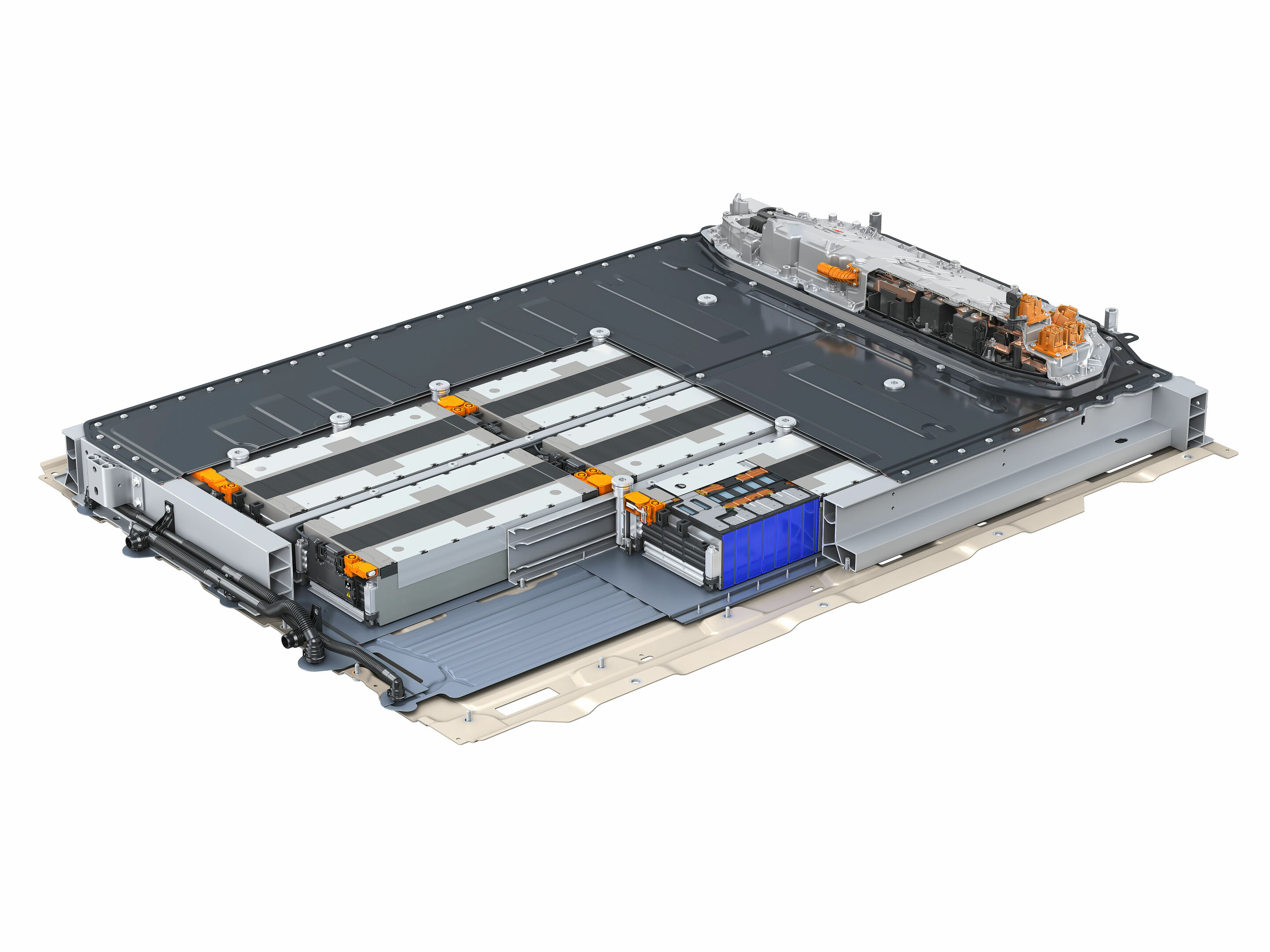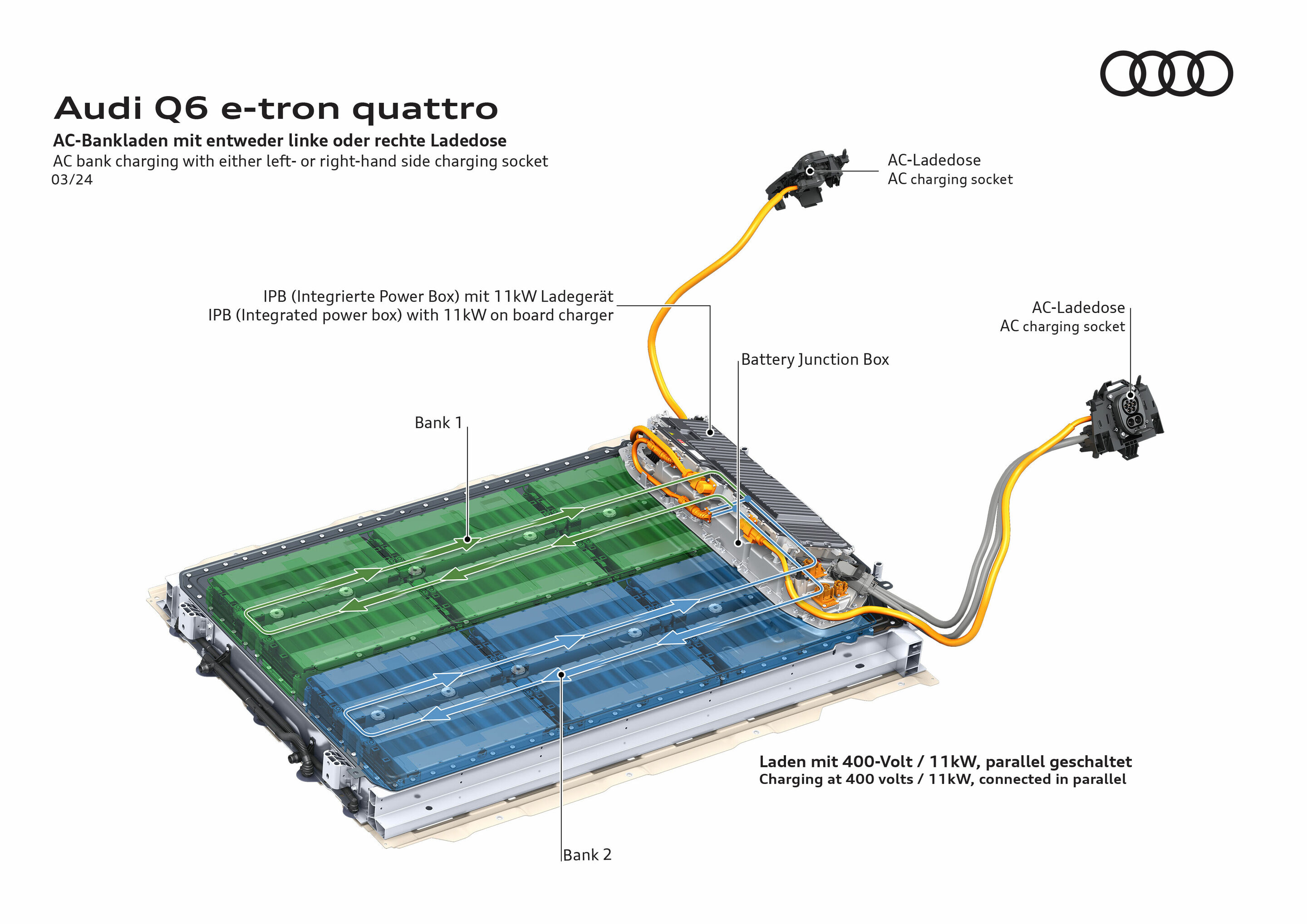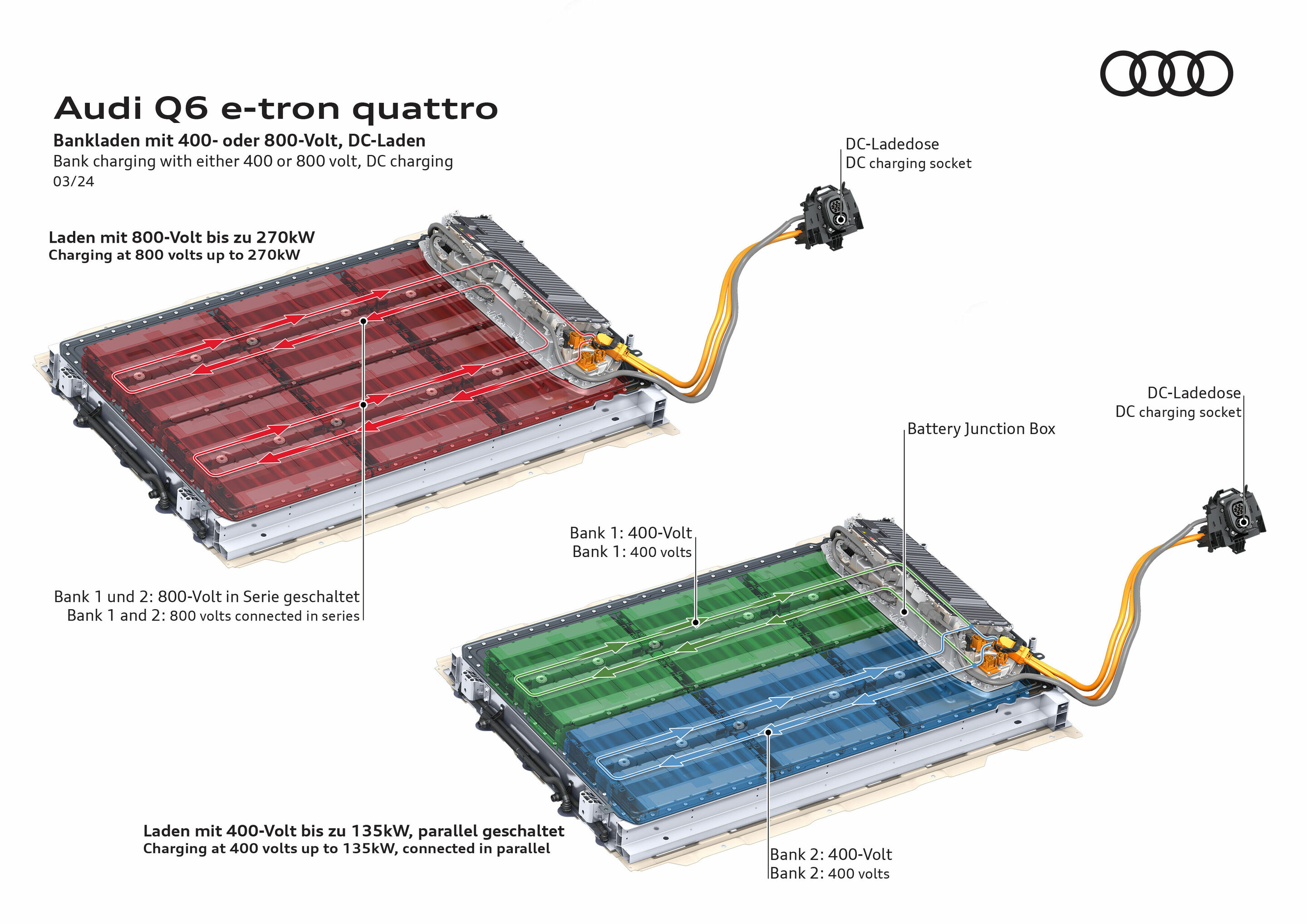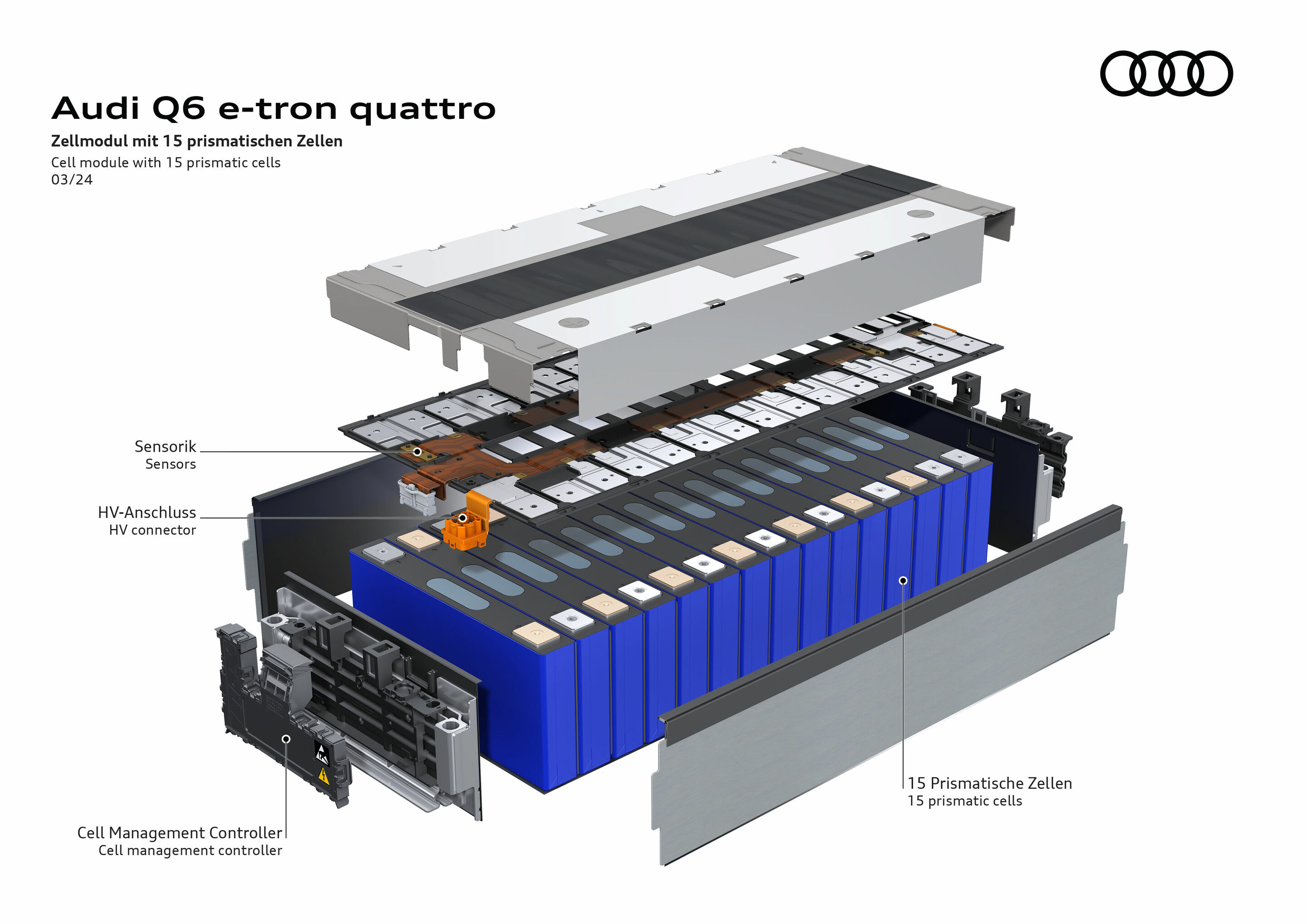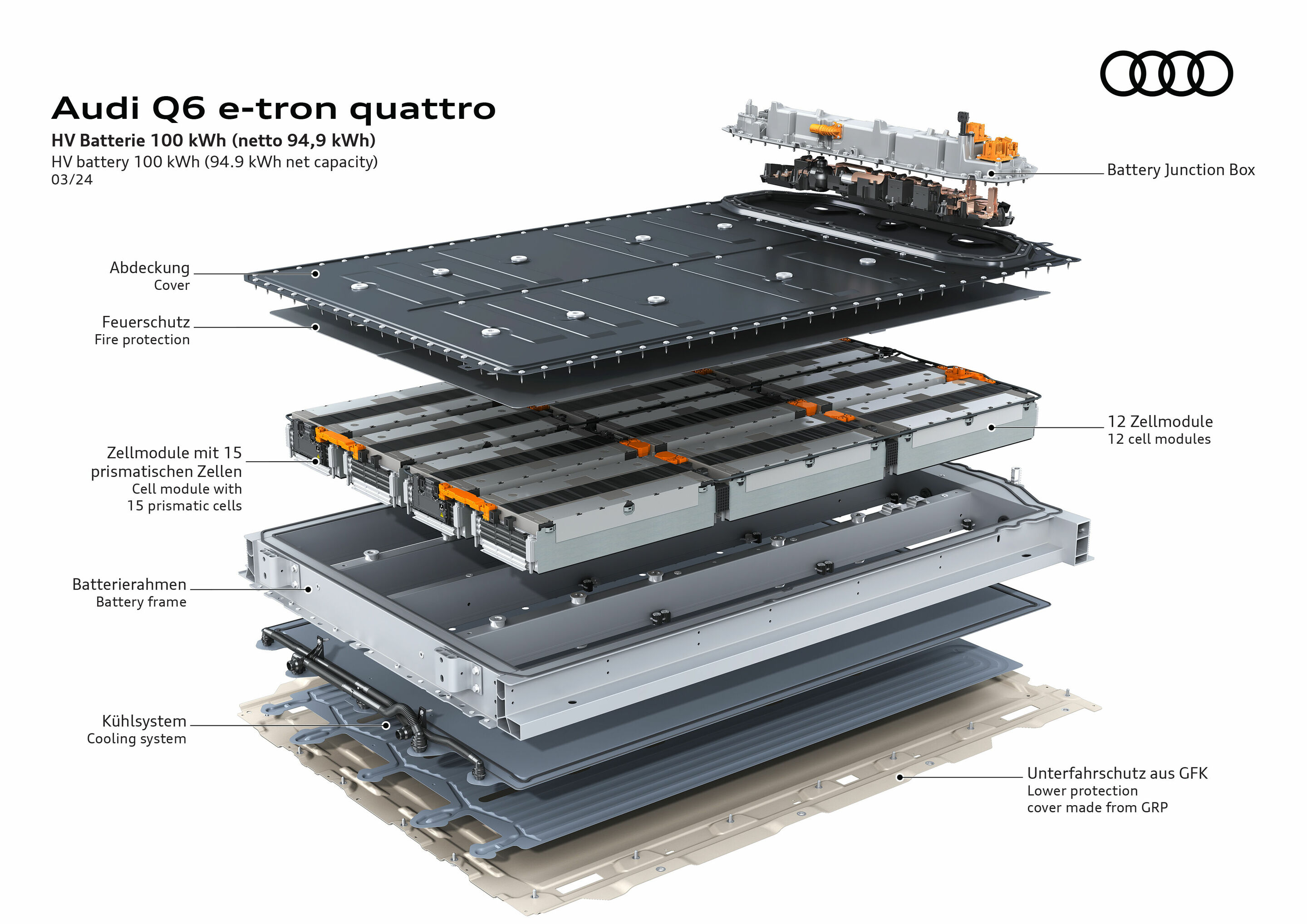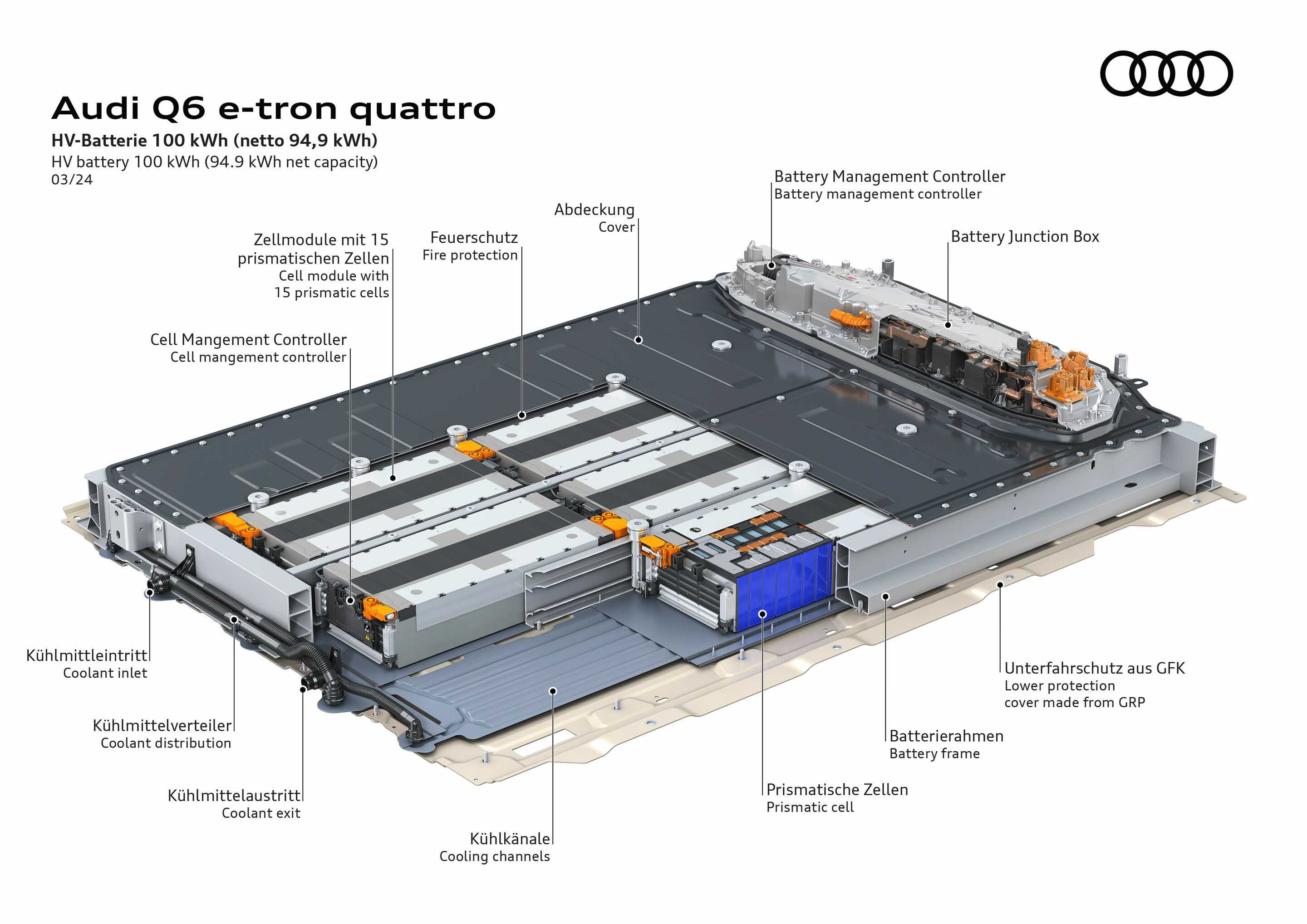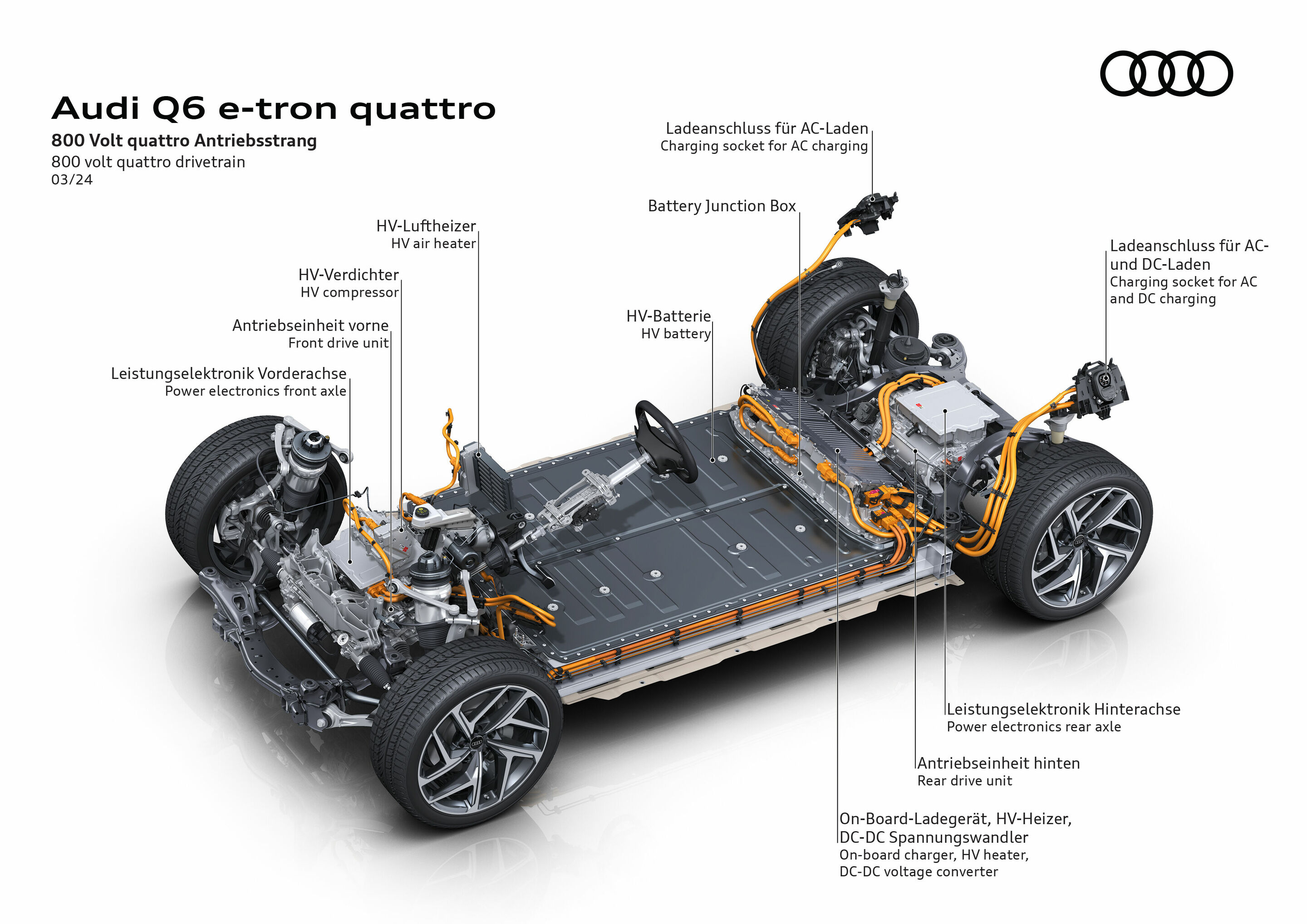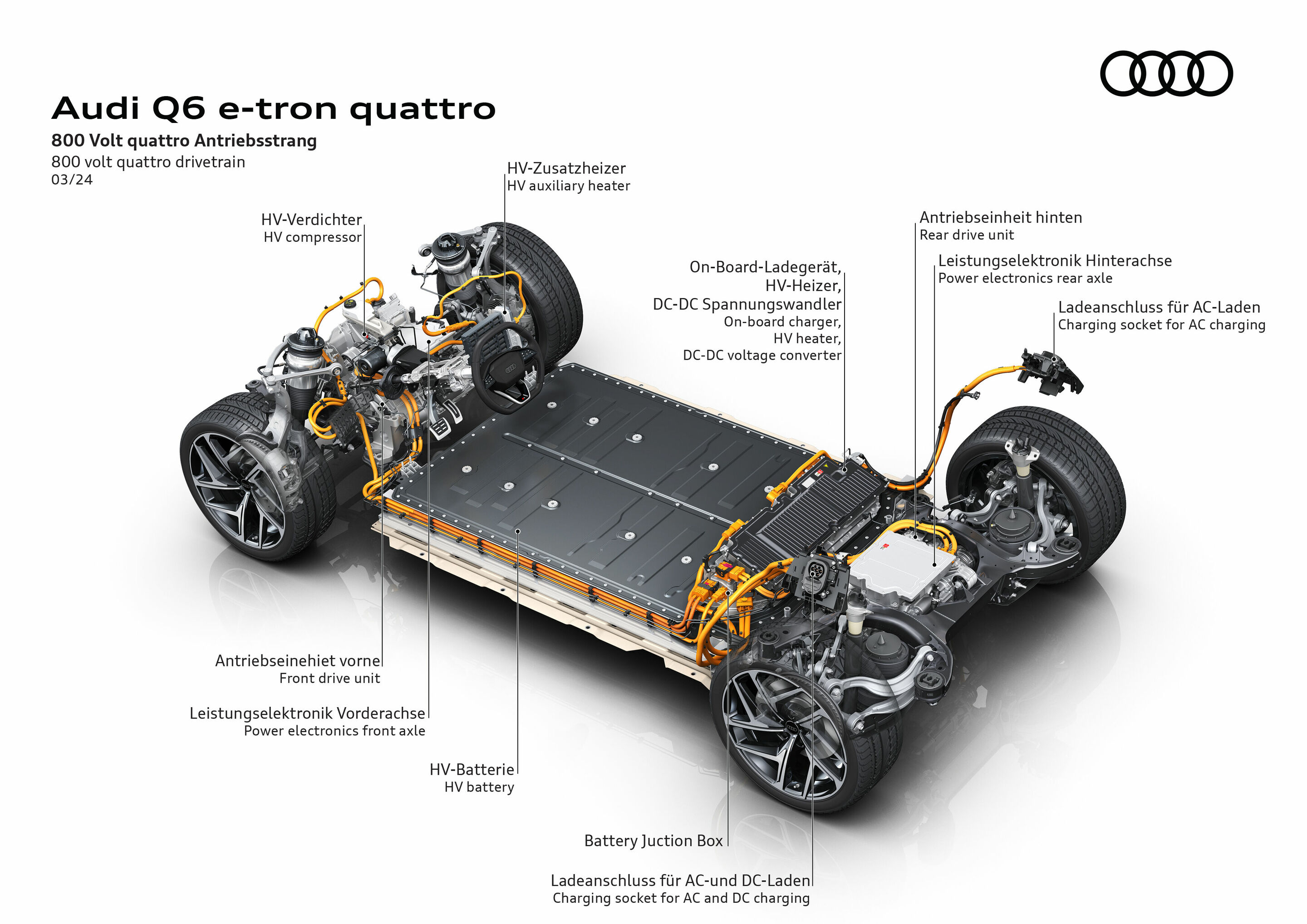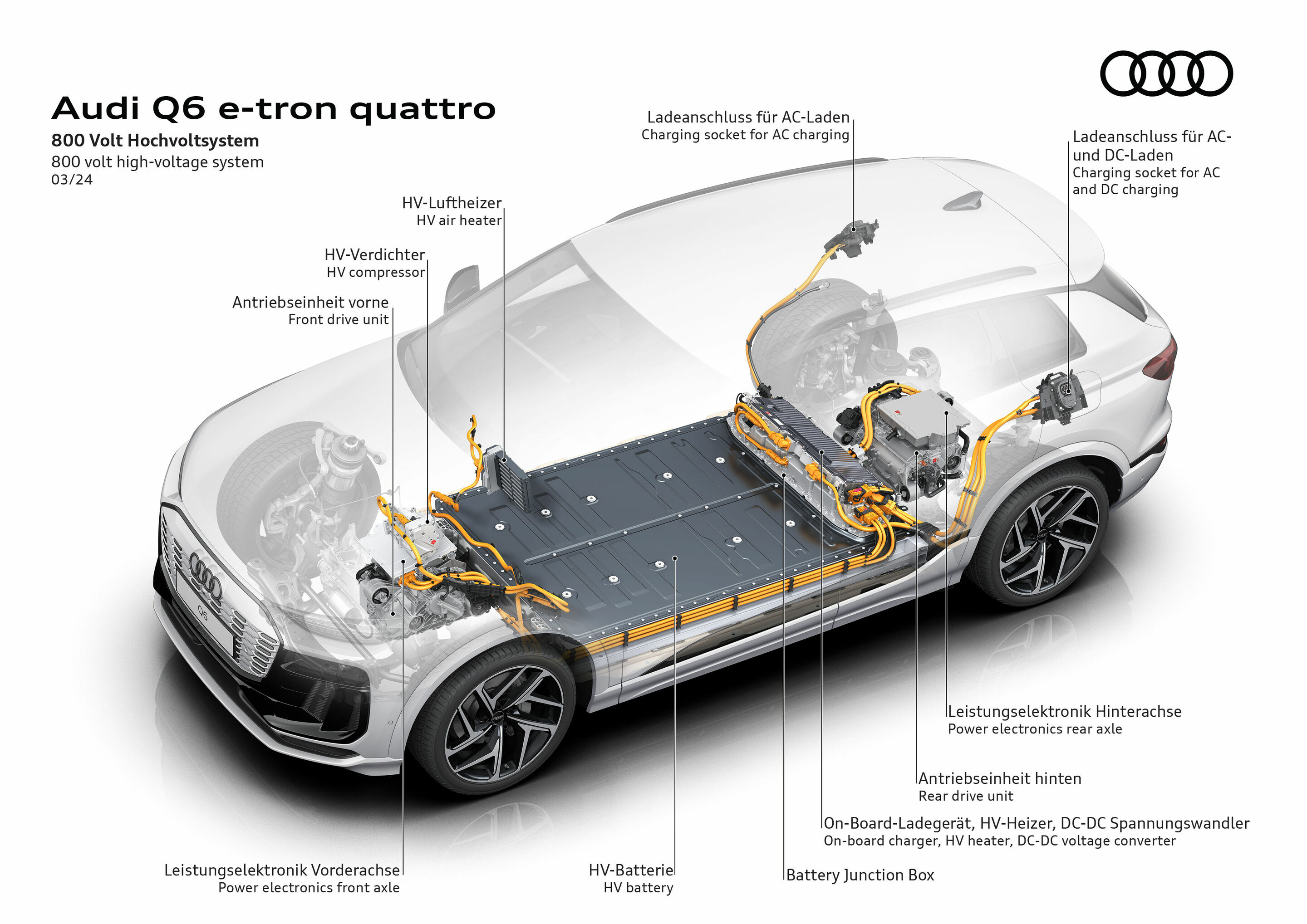High-performance, compact, and intelligent: the high-voltage battery for the Premium Platform Electric
- Completely redeveloped high-voltage battery with high energy density requires less installation space
- Twelve modules with 180 prismatic cells, intelligent thermal management, and 800-volt architecture boost charging performance
- Battery layout enables assembly of more batteries in shorter time
The Q6 e-tron series, built in Ingolstadt, is the first fully electric high-volume model manufactured at a German Audi site. Simultaneously, the brand with the four rings is consolidating new skills and technologies at its company headquarters with the assembly of the newly developed high-voltage (HV) battery for the Premium Platform Electric (PPE). Thanks to the new battery assembly, Audi is gradually increasing the vertical range of manufacture for fully electric models and gathering experience for battery module production further down the line.
As part of the production of the Audi Q6 e-tron series, approximately 1,000 high-voltage (HV) batteries are assembled every day on an area of around 30,000 square meters. A total of about 300 employees work in battery assembly in three shifts. The automation rate rises to about 90 percent. For each high-voltage battery, the manufacturing time falls from about two hours to only 55 minutes. Compared to the battery systems Audi has used to date, the battery for the PPE consists of only twelve modules with a total of 180 prismatic cells. For comparison: The HV battery in the Q8 e-tron is made up of 36 modules and 432 cells. The significant enlargement of the cells corresponds closely to the system voltage of 800 volts to achieve the best possible balance between range and charging performance.
For the PPE, the ratio of nickel to cobalt and manganese in the cells is approximately 8:1:1, with a reduced proportion of cobalt and an increased proportion of nickel, which is of particular importance for the .
The reduction of the number of modules for the PPE batteries offers a range of advantages. The battery, which can be used modularly for high-floor and flat-floor models, requires less installation space, is lighter, and can be integrated into the vehicle's crash structure and cooling system better. It also requires fewer cables and high-voltage connectors. The number of bolted fastenings has been significantly reduced. Additionally, the electrical connections between the modules are shorter, which substantially reduces losses and weight. A cooling plate integrated into the battery housing ensures homogeneous heat transfer and therefore near-optimal battery conditioning. The protective side skirts made of hot-formed steel are not affixed to the battery, but instead attached very securely to the body. The underbody cladding made of fiber composite material is also new. This construction further reduces weight and improves the thermal insulation between the battery and the environment. This allows the PPE's battery to be heated or cooled more efficiently.
Battery capacity 100 kWh and charging power up to 270 kW
The HV battery for the PPE was developed from the ground up and its structure was simplified. It is equipped with twelve modules and 180 cells and has a gross storage capacity of 100 kWh (94.9 net). For each module, 15 electrochemical cells are connected in series. The maximum charging power for the 100 kWh battery is 270 kW. A variant with a capacity of 83 kWh is also available for the Audi Q6 e-tron series. The latter consists of ten modules and 150 cells. Thanks to optimized cell chemistry and high-performance thermal management, the 100 kWh battery can be charged from 10 to 80 percent in 21 minutes at a suitable fast-charging station. Recharging a range up to 255 kilometers (158 mi) is possible in only ten minutes.
The battery management controller (BMC), a central control unit developed specifically for the PPE, is responsible for the current control required for fast and battery-saving charging. The BMC is completely integrated in the HV battery. As part of a permanent monitoring, the twelve cell module controllers (CMS) send data such as the current module temperature or the cell voltage to the BMC, which sends its information, for example regarding the state of change (SoC), to the HCP 4 high-performance computer (part of the new E3 1.2 electronic architecture). This computer, in turn, sends data to the new predictive thermal management, which regulates the cooling or heating circulation as needed for optimal battery performance.
If a charging station is working with 400-volt technology, bank-charging is possible for the first time. The 800-volt battery is automatically divided into two batteries at equal voltage, which can then be charged in parallel with up to 135 kW. Both halves of the battery are first brought to the same level of charge and then charged together.
Efficient thermal management for shorter charging time, more range, and longer service life
Intelligent thermal management provides an essential contribution to the high charging performance and long service life of the HV battery in the PPE. The most important component is predictive thermal management, which uses data from the navigation, the route, the departure timer, and the customer's usage behavior to calculate the need for cooling or heating in advance, as well as to provide them both efficiently and at the right time. If a customer is driving to an HPC charging station included in the planned route, the predictive thermal management prepares the DC charging process and cools or heats the battery so that it can charge faster, thus reducing charging time.
If there is a steep grade ahead, the thermal management adjusts the HV battery’s temperature by appropriate cooling to prevent a higher thermal stress.
If the customer provides no information from which predictive data can be derived, a standard algorithm regulates the HV battery's thermal management. This algorithm also collects a great deal of information and reacts to the driving situation. If, for example, the driver has selected efficiency mode in the drive select menu, the conditioning of the battery is activated later and the real range can be increased depending on driving behavior. In dynamic mode, the goal is optimal performance. However, if the current traffic situation does not allow for dynamic driving, the thermal management will react to this and minimize the energy usage for battery conditioning.
Post-conditioning and continuous conditioning are also new in the PPE thermal management. These functions monitor the battery temperature for the car’s entire service life so the battery is kept in the optimal temperature range even when the vehicle is not moving – for example in case of hot outside temperatures. This measure also contributes to extended battery service life.
Due to high temperature homogeneity within the battery, performance can be increased - which is why the coolant is directed below the modules according to the U-flow principle. The battery cooling plate is also a structural component of the battery, which allows an additional floor panel in the HV space of the battery housing to be eliminated and the thermal connection to the modules to be optimized using a heat-conducting paste.
